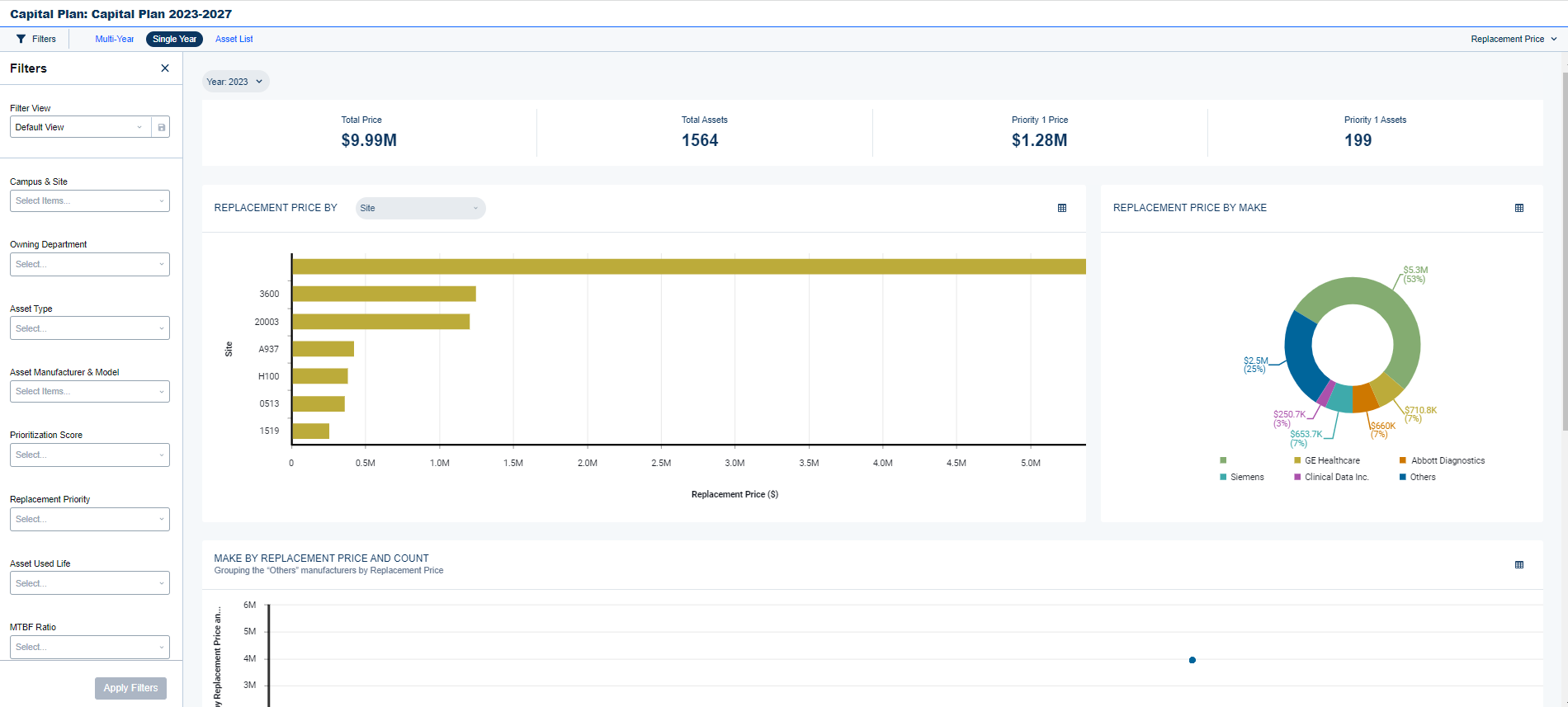Bringing Facilities Condition Assessments into the Digital Age
There is no denying the importance of conducting routine Facilities Conditions Assessments (FCAs). The data collected provides insights into overall asset health, while helping building operators prioritize where they allocate their budgets. But there are often large gaps between when the assessment is completed and when that data is used to make strategic decisions. This is because many FCA processes still rely on static paper reports that are time-consuming to analyze, resulting in outdated data. And outdated data makes an already difficult activity so much harder—calculating Facilities Condition Index (FCI) scores.
FCIs are the sum of all estimated repair costs against any given asset divided by the replacement cost of that asset (repair/replacement). Condition Index is reported at all levels of the Site and Asset hierarchies and provides insight into how the condition of the building is trending over time.
A lower FCI means that you need to invest less into the facility compared to its overall value. A higher score, however, means that you need to invest more into repairs. It also takes the costs of deferred maintenance and inflation into account.
Why Is This Important?
FCIs allow you to understand how your buildings are operating and how to prepare for the future.
When you have more accurate FCI scores, you can better prioritize maintenance repairs, determine when to repair vs. replace assets, forecast upcoming costs, and make data-driven decisions around capital planning. These scores provide a valuable look into your real estate portfolio, and they help you plan and prioritize projects over both the short- and long-term.
Key Challenges in Obtaining Facility Condition Index Scores
The process for performing FCAs can often be highly manual–especially if tracked over time using spreadsheets. It’s also difficult to combine the high-level architectural and engineering assessments conducted in the field with the equipment-level data provided by suppliers and manufacturers.
Ultimately, FCAs and the corresponding FCIs can get stale if you aren’t easily able to update and input new information into your assessments. And if you only look at individual assets, you won’t get a true score for your facility, which can result in increased risks, unnecessary costs, and inefficient workflows.
For example, Company A gave an HVAC unit a score of .5 during a routine FCA two years ago, so it was categorized as a lower priority to replace. However, since the initial FCA was conducted, it has required corrective maintenance five times, which cost the company additional funds they were unprepared for. When they finally were able to replace the HVAC unit, the price of a new unit also increased, ultimately costing the company much more than if they had replaced it after seeing the HVAC start to fail. But that doesn’t have to be the case.
In Connected Workplace, you can track your FCA data, asset information, and preventive and corrective work orders on a single platform to calculate an up-to-date FCI. This ensures capital decisions are being made with the most accurate data, bridging facilities maintenance, asset management, and capital planning. With updated data, Company A could have saved costs, while managing its capital needs better. After the second or third maintenance call and associated costs were entered into the system, the FCI would have automatically increased, indicating a more pressing need.
Nuvolo is Changing the FCA Game
Nuvolo Connected Workplace enables you to access and update information about all your facilities and assets in one place, so you don’t have to juggle multiple spreadsheets or systems—saving you time and ensuring data accuracy. You can manage and track:
- Facilities condition assessments
- Maintenance activity, including deferred maintenance
- Remaining useful life for assets, systems, and inventory
- Asset compliance to regulations
- Overall asset repair or replacement costs
- System deficiencies
- Repair priorities
By compiling this information, it is much easier to define the estimated total repair costs, get a holistic look at your facilities, and then automatically calculate the FCI from within the platform.
Architects and engineers in the field can analyze facilities and perform FCAs of buildings–cataloging equipment, spaces, and assets in Nuvolo. Additionally, suppliers can track fixes and replacements for individual pieces of equipment within the same platform. This provides a detailed look at what happens to your FCI score when you make repairs or replacements, as you and your teams can input changes and monitor how your scores are affected.
Additionally, you can track inflation and estimate how it impacts the FCI. If you replace an asset, your score changes for the better. If nothing is done, the score can change over time for the worse since service costs or a replacement asset may increase.
Going Beyond the Facility
Quickly prioritizing your capital needs is only one benefit of Nuvolo Connected Workplace. Deficiencies are fed into the capital planning process, and once a capital plan is approved, it is seamlessly converted to a capital project where all key stakeholders, milestones, budgets, and other details can be tracked and managed through built-in workflows and reports. Upon completion, any new assets can be added to inventory and the asset lifecycle begins again.

To learn more, watch how Chevron Transformed Their Global Facilities Maintenance.
Learn more about Facility Condition Assessments in Connected Workplace.